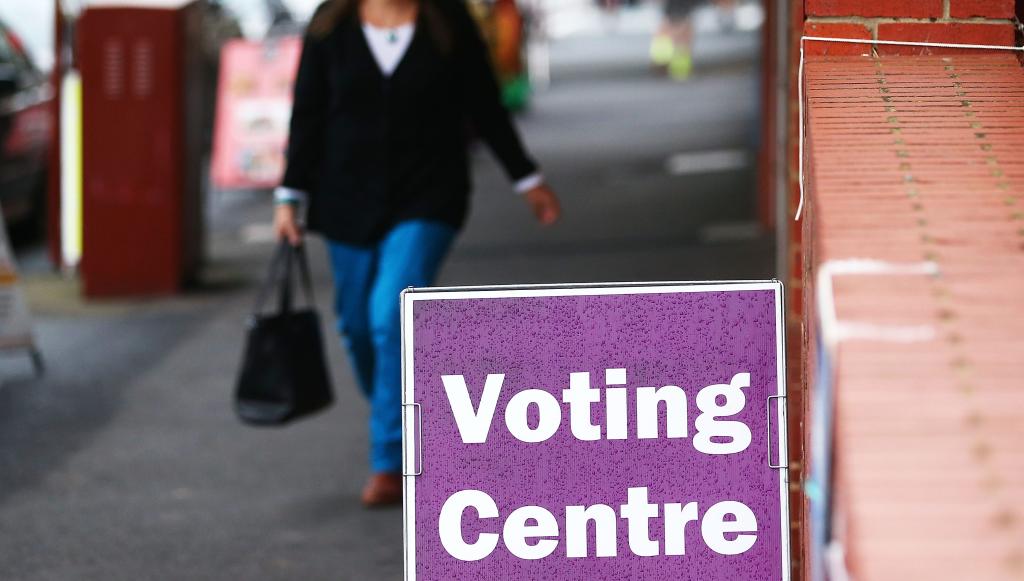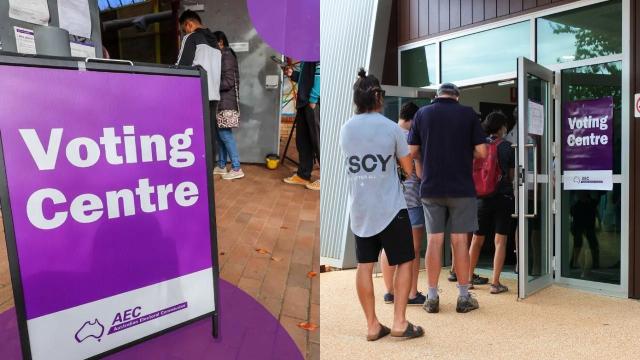This weekend, Australians will go to the polls to vote on an Aboriginal and Torres Strait Islander Voice to Parliament, in what will be the first referendum in 24 years. Voting for the referendum will be run in a similar way to an Australian election. If you’re wondering how to vote, we’ve broken down the options for you.
Who can vote in the referendum?
Similar to an election, voting in a referendum is compulsory for Australians.
If you’re registered on the electoral roll, you’ll need to vote. Those who were not yet registered but are Australian citizens over the age of 18 needed to enrol to vote with the Australian Electoral Commission (AEC) by September 18.
How to vote in the referendum

As always, there are a number of ways to cast your vote, including via postal vote, in-person at a polling centre or over the phone.
If you’re unable to get to a voting centre on polling day, which is this Saturday, October 14, you have some options for pre-polling. That is provided you are eligible, which the AEC determines as someone who is:
- outside the electorate where you are enrolled to vote
- more than 8km from a polling place
- travelling
- unable to leave your workplace to vote
- seriously ill, infirm or due to give birth shortly (or caring for someone who is)
- a patient in hospital and can’t vote at the hospital
- has religious beliefs that prevent you from attending a polling place
- in prison serving a sentence of less than three years or otherwise detained
- a silent elector
- has a reasonable fear for your safety or well-being.
For those who are overseas during voting day, polling centres will be available at the majority of Australian Embassies, Consulates and High Commissions in cities around the world. If you can’t reach one of these, it was recommended you apply early for an overseas postal vote.
Postal voting is another option for voting in the referendum, provided you applied early enough and satisfy the eligibility requirements.
Mobile voting will be available for those who are unable to get to a polling place and is offered for some residential care facilities and remote areas of Australia.
Telephone voting, meanwhile, is reserved for those who are blind or have low vision.
You can also vote in person at early voting centres. Early voting began on October 2 in the Northern Territory, Tasmania, Victoria and Western Australia, and on October 3 in the ACT, New South Wales, Queensland and South Australia.
If you’re available to vote on polling day (October 14), you’ll need to go to a polling centre between 8:00 am and 6:00 pm to cast your ballot and perhaps pick up a democracy sausage.
If you’re enrolled to vote and don’t fill out a ballot in the 2023 referendum you’ll face a $20 fine from the AEC, unless you provide a valid reason why.
Where do I vote? Finding polling booths near you on voting day
Assorted voting centres and polling booths have been set up for early voting, referendum day voting and for those voting remotely. You can enter your location here to find the best place to cast your vote.
What is different about this voting day?
While the process of voting in a referendum is similar to that of voting in an election, there is a key difference.
Instead of numbering a ballot with your preferences, the paper will instead hold a question which will be:
“A Proposed Law: to alter the Constitution to recognise the First Peoples of Australia by establishing an Aboriginal and Torres Strait Islander Voice. Do you approve this proposed alteration?”
In the blank box provided, you will then need to write either ‘Yes’ or ‘No’ to cast your vote. You will need to physically write the word, do not place a tick or cross in the box because it will disqualify your vote.
The referendum will need to achieve the national majority in order to pass; that is, more than half of the formal votes cast are for ‘Yes’ in at least four states.
When will we know the results of the referendum?
While counting will begin on polling night, it’s unlikely we’ll have the results for the referendum on October 14. As the AEC outlines:
All votes cast on voting day will be counted on voting night, along with a portion of the votes cast at early voting centres. While there could be a public indication of a potential results on the night, if it is close it may take days or several weeks for the count of additional pre-poll votes, overseas votes and postal votes to come back to the AEC and be counted.
Results will be published on a rolling basis on the AEC’s virtual tally room from the closure of polls until all the votes have been counted.
You can find more information in the official guide to the 2023 referendum here.
This article on polling booths and voting in the referendum has been updated since its original publish date.
Lead Image Credit: AEC Instagram/iStock

Leave a Reply
You must be logged in to post a comment.